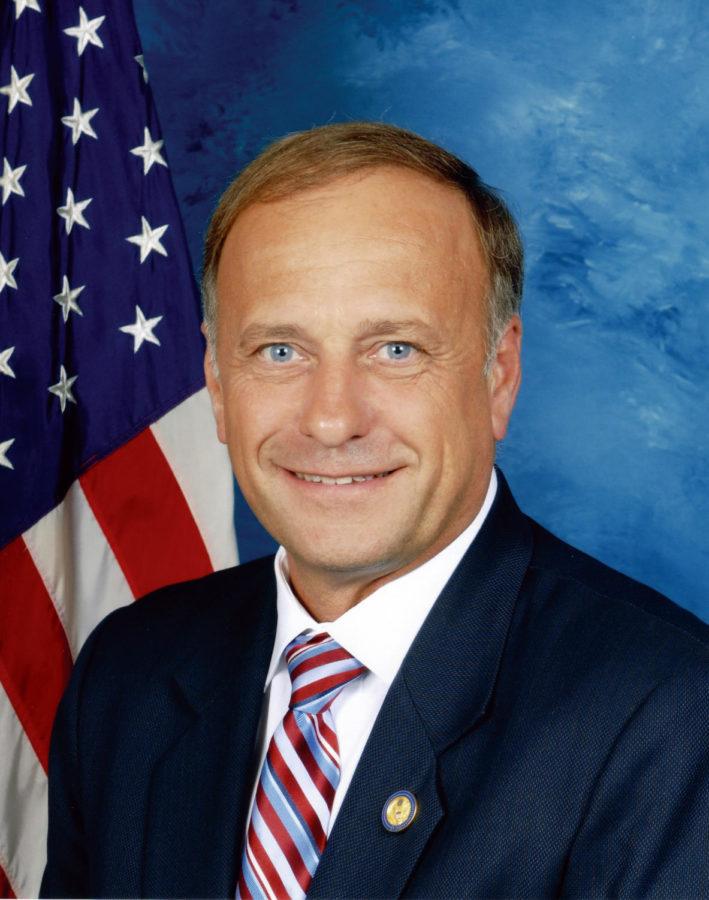- App Content
- App Content / News
- News
- News / Politics And Administration
- News / Politics And Administration / State
Iowa House races heat up
October 5, 2015
While most eyes are on the presidential nominations in Iowa and beyond, voters are in for a close race in two of Iowa’s U.S. House districts during the 2016 election.
Districts 2 and 4 are considered “safe” for the incumbents, meaning any challengers will face an uphill challenge during their campaigns. But Roll Call, a news organization following Capitol Hill and elections, rates the 1st District, even though it is held by a Republican, as “tilts Democrat,” and the 3rd District is a “toss up.”
Iowa’s 4th District
District 4 covers the north-central part of Iowa, including Ames, Boone, Fort Dodge, Mason City and Sioux City.
U.S. Rep. Steve King, a Republican first elected in 2003, is the incumbent. O’Brien County Democratic Party chair Kim Weaver has announced she will challenge King.
Iowa’s 2nd District
District 2 covers the southeastern part of the state, including Burlington, Davenport, Iowa City and Ottumwa.
U.S. Rep. Dave Loebsack, who was first elected into the House in 2006, is the incumbent. State Sen. Mark Chelgren is planning to challenge Loebsack.
The real competition is happening within Districts 1 and 3, with several candidates announcing they will run, and incumbents already ramping up fundraising activities.
Iowa’s 1st district
District 1 covers the northeastern part of the state, including Cedar Rapids, Dubuque and Waterloo.
U.S. Rep. Rod Blum, the Republican incumbent, is in his first term after being elected in 2014. He is serving on the Budget and Oversight and Reform committees, as well as the Information Technology Subcommittee.
Blum has the advantage of being an incumbent, with no likely Republican opponents, while Democrats will battle in a primary election before taking on Blum in the general election.
“Blum is a unique candidate,” said Jeff Patch, a Des Moines political consultant who worked for Blum’s 2014 campaign. “He has personal style, he is much more focused on his promises from his campaigns.”
Democrat Monica Vernon, currently a Cedar Rapids city councilwoman, ran for the seat in 2014, but after losing in the primary, was chosen by state Sen. Jack Hatch to run for lieutenant governor. Pat Murphy beat her in the race to be the Democratic candidate last time, and they are now fighting for it again.
Vernon was the first candidate to jump in the race and currently has the most endorsements, including Loebsack and several other U.S. representatives and several national figures including the number two Democrat in the House, Steny Hoyer. Emily’s List, a pro-choice organization that pours millions into elections, endorsed her early on.
“Vernon has much more of a chance this time,” said Tim Hagle, a University of Iowa political science professor who keeps tabs on Iowa politics.
Murphy was Speaker of the Iowa House and has served 12 years total in the state legislature. He was the Democratic nominee in 2014, but lost to Blum in the general election. Both Vernon and Murphy have experience with campaigning and the focus for them right now is to play off one as superior over the other.
Former Saturday Night Live star Gary Kroeger is another Democratic candidate for the House race. While he may have name recognition for his role on TV, Kroeger does not have the campaign organization and fundraising to match Vernon and Murphy, but he is positioning himself to the left of the other candidates, focusing on the environment and eduction.
“I can’t see Kroeger going very far at all,” Hagle said.
Iowa’s 3rd District
District 3 covers the southwestern part of the state, including Council Bluffs, Creston, Des Moines and Red Oak.
U.S. Rep. David Young, a Republican, is in his first term. Like Blum, Young has the advantage of being an incumbent.
Two Democrats are running for the Democratic nomination, including Jim Mowrer, a former Iraq war vet who was the Democratic nominee in the 4th District in 2014 and was co-chair of the Iowa Democratic Party until earlier this year.
Des Moines businessman Desmund Adams is also running in the race.
Mowrer has the backing of many statewide Democrats already, including Loebsack and several other state legislators.
“Once you’ve been through an intra-party fight, you come out hardened,” said Mack Shelley, professor of political science at Iowa State.
He said after a fight for candidacy within your own party, that candidate will have shown that they are strong and ready for the next step.
This election will be greatly affected by the presidential election with higher voter turn out, and it generally sways the votes of non-party voters by which party is doing better in the presidential race.
Shelley said the congressional candidates in Iowa are going to have to do four things in order to get elected: gain support from natural constituents, convert the undecideds, neutralize the opposition and focus on perceptions of candidate’s strength.
The race for Iowa Congress is a close knit election that is currently unpredictable, Shelley said. Depending on who the presidential candidates support, turn-out effects will vary, he added.
Shelley claims that candidates will have to “swim up stream against the current.”







